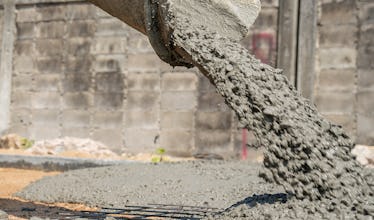Hellebrekers has developed its own proprietary measurement software that is NMI-certified under approval number T10446.


By placing advanced sensors in strategic locations, Hellebrekers is able to measure and weigh almost anything. Moisture measurement in the incoming raw materials, for example, the amount of residual flow, the weights in the weighing trays, the plasticity of raw materials and also the energy consumption. Understanding this data gives you the tools you need to make timely adjustments and optimise your process.
Hellebrekers has developed its own proprietary measurement software that is NMI-certified under approval number T10446.



Moisture measurement
The aggregate material in concrete usually consists of sand and gravel, but depending on the performance requirements and availability of these materials, basalt, granite, limestone, quartz and concrete granules may also be incorporated. They are raw materials that combine with water and binders to form the final concrete. How much water ultimately needs to be added depends on the moisture percentage already present in each aggregate material. In order to measure this precisely, the moisture content of each aggregate material is measured prior to metering into the mix. Based on the measurement data for small trial batches, the system determines a new set point for each aggregate material. Metering is resumed with the remaining aggregate and an appropriate percentage of water is added.

Metering
To ensure consistent quality of each finished product, exact values are required during production. Weighing and metering the raw materials as accurately as possible is crucially important. Hellebrekers has developed its own proprietary measurement software for this, which is NMI-certified under approval number T10446. Daily calibration with weights that are permanently mounted on your installation is a standard function of our software. This allows you to check every day that the metering feeds are still correct. Your installation itself is calibrated annually.


Calibrated weighing
Calibrated force transducers and indicators provide an accurate representation of the actual weight. They are checked every two years by an external inspection body. In addition, a weight test is performed every day to check the weighing hopper. Before starting, weights are pulled up and the indicated value checked. During production, the operator is alerted to metering and release time violations, i.e. tolerance deviations caused by mechanical faults during the metering operations. This is all designed to ensure consistent production. The residual flow value for the metered raw material is automatically adjusted when the material flow changes so that the quantities to be metered remain constant, keeping the mixture composition optimal.